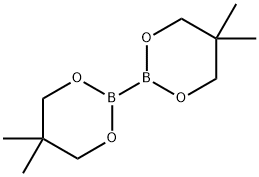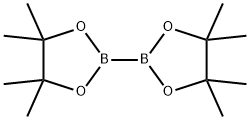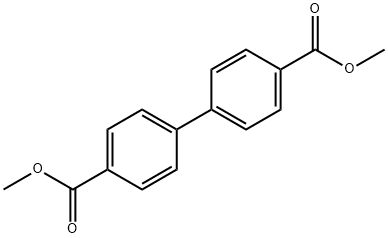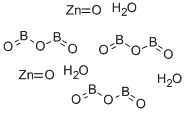Bis(neopentyl glycolato)diboron
Synonym(s):5,5,5′,5′-Tetramethyl-2,2′-bi-1,3,2-dioxaborinane
- CAS NO.:201733-56-4
- Empirical Formula: C10H20B2O4
- Molecular Weight: 225.89
- MDL number: MFCD02093062
- EINECS: 639-407-9
- SAFETY DATA SHEET (SDS)
- Update Date: 2025-01-27 09:38:02

What is Bis(neopentyl glycolato)diboron?
Description
Bis(neopenyl glycolato)diboron is a boronating agent which provides the corresponding boronate ester via Pd-catalyzed coupling, similar to bis(pinacolato)diboron. Bis(neopenyl glycolato)diboron has been found to be more efficient than bis(pinacolato)diboron for the synthesis of hindered ortho-substituted arylboronic acids. Neopentylato boronic esters are more readily hydrolyzed to boronic acids than their corresponding pinacolato esters.
Chemical properties
White to light yellow crystal powder
The Uses of Bis(neopentyl glycolato)diboron
suzuki reaction
The Uses of Bis(neopentyl glycolato)diboron
Reagent to prepare boronic acid esters.
The Uses of Bis(neopentyl glycolato)diboron
Bis(neopentyl glycolato)diboron can make borate adducts used for Suzuki coupling.
What are the applications of Application
Bis(neopentyl glycolato)diboron is a reagent used to prepare boronic acid esters
Properties of Bis(neopentyl glycolato)diboron
| Melting point: | 180.5-184.5 °C(lit.) |
| Boiling point: | 214.3±7.0 °C(Predicted) |
| Density | 0.99±0.1 g/cm3(Predicted) |
| storage temp. | Inert atmosphere,2-8°C |
| solubility | Chloroform (Sparingly), Ethyl Acetate (Slightly) |
| form | Liquid |
| color | Clear colorless |
| Sensitive | moisture sensitive |
| BRN | 8839038 |
| CAS DataBase Reference | 201733-56-4(CAS DataBase Reference) |
Safety information for Bis(neopentyl glycolato)diboron
| Signal word | Warning |
| Pictogram(s) |
 Exclamation Mark Irritant GHS07 |
| GHS Hazard Statements |
H315:Skin corrosion/irritation H319:Serious eye damage/eye irritation H335:Specific target organ toxicity, single exposure;Respiratory tract irritation |
| Precautionary Statement Codes |
P261:Avoid breathing dust/fume/gas/mist/vapours/spray. P264:Wash hands thoroughly after handling. P264:Wash skin thouroughly after handling. P280:Wear protective gloves/protective clothing/eye protection/face protection. P304+P340:IF INHALED: Remove victim to fresh air and Keep at rest in a position comfortable for breathing. P305+P351+P338:IF IN EYES: Rinse cautiously with water for several minutes. Remove contact lenses, if present and easy to do. Continuerinsing. P405:Store locked up. |
Computed Descriptors for Bis(neopentyl glycolato)diboron
New Products
3-Iodophenylacetic acid 3-Pyridineacetonitrile, α-hydroxy- 2-Propanamine, 1-chloro-, hydrochloride (9CI) 3-(hexyloxy)-4-(pyridin-3-yl)-1,2,5-thiadiazole 2-Hexyn-1-ol Dibenzo-18-crown-6 Nickel(II) perchlorate hexahydrate, 98% 4-Bromophenylacetonitrile, 95% 3-Bromo-4-fluoroaniline, 97% Sodium tetraborate decahydrate, 98% Palladium(II) acetate, trimer, Pd 99% 4-Bromo-2-chlorotoluene, 97% N N Dimethylformamide Dimethyl Acetal (Dmf Dma) 2,3-Dichloro Benzoyl Cyanide [Side Chain] Bis(2-Chloroethyl) Amine Hydrochloride L-Glutamic Acid Diethyl Ester Hydrochloride 5-(Difluoromethoxy)-2-Mercaptobenzimidazole 1-Ethyl-3-(3-Dimethylaminopropyl)-Carbodiimide Hydrochloride [EDC Hcl] 1,4-Napthoquinone Bromoiodomethane Sodium Bicarbonate Methylene Dichloride (MDC) Ethyl Acetate Indole-3-Carbinol (I3C)Related products of tetrahydrofuran








You may like
-
 Bis(neopentyl Glycolato)diboron CAS 201733-56-4View Details
Bis(neopentyl Glycolato)diboron CAS 201733-56-4View Details
201733-56-4 -
 Bis(neopentyl glycolato)diboron, 96% CAS 201733-56-4View Details
Bis(neopentyl glycolato)diboron, 96% CAS 201733-56-4View Details
201733-56-4 -
 Bis(neopentyl glycolato)diboron CASView Details
Bis(neopentyl glycolato)diboron CASView Details -
 Bis(neopentyl glycolato)diboron CAS 201733-56-4View Details
Bis(neopentyl glycolato)diboron CAS 201733-56-4View Details
201733-56-4 -
 17604-74-9 3-Pyridineacetonitrile, α-hydroxy- 98+View Details
17604-74-9 3-Pyridineacetonitrile, α-hydroxy- 98+View Details
17604-74-9 -
 Cyclohexane, (2-propynyloxy)- 67967-07-1 98+View Details
Cyclohexane, (2-propynyloxy)- 67967-07-1 98+View Details
67967-07-1 -
 3-Iodophenylacetic acid 1878-69-9 98+View Details
3-Iodophenylacetic acid 1878-69-9 98+View Details
1878-69-9 -
 132945-75-6 (S)-1-Boc-3-methanesulfonyloxy-pyrrolidine 98+View Details
132945-75-6 (S)-1-Boc-3-methanesulfonyloxy-pyrrolidine 98+View Details
132945-75-6
Statement: All products displayed on this website are only used for non medical purposes such as industrial applications or scientific research, and cannot be used for clinical diagnosis or treatment of humans or animals. They are not medicinal or edible.
